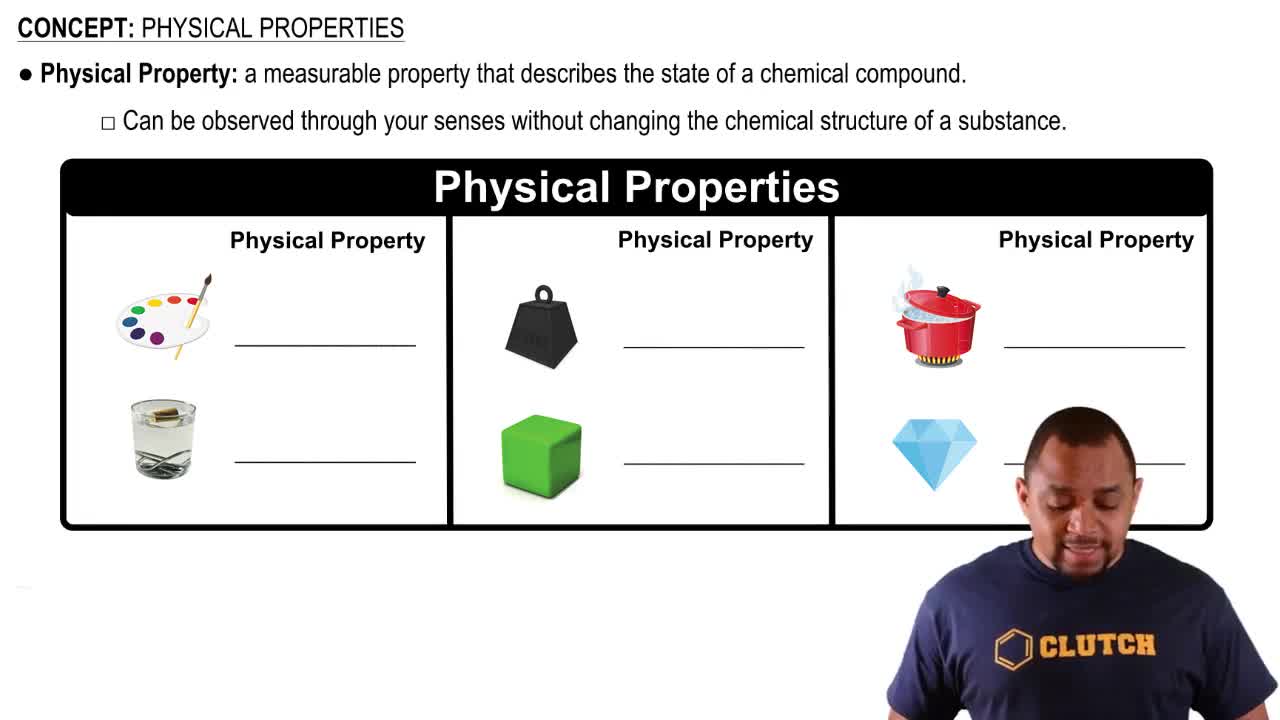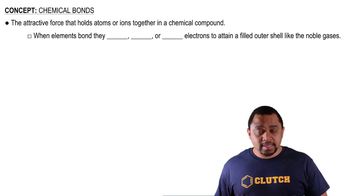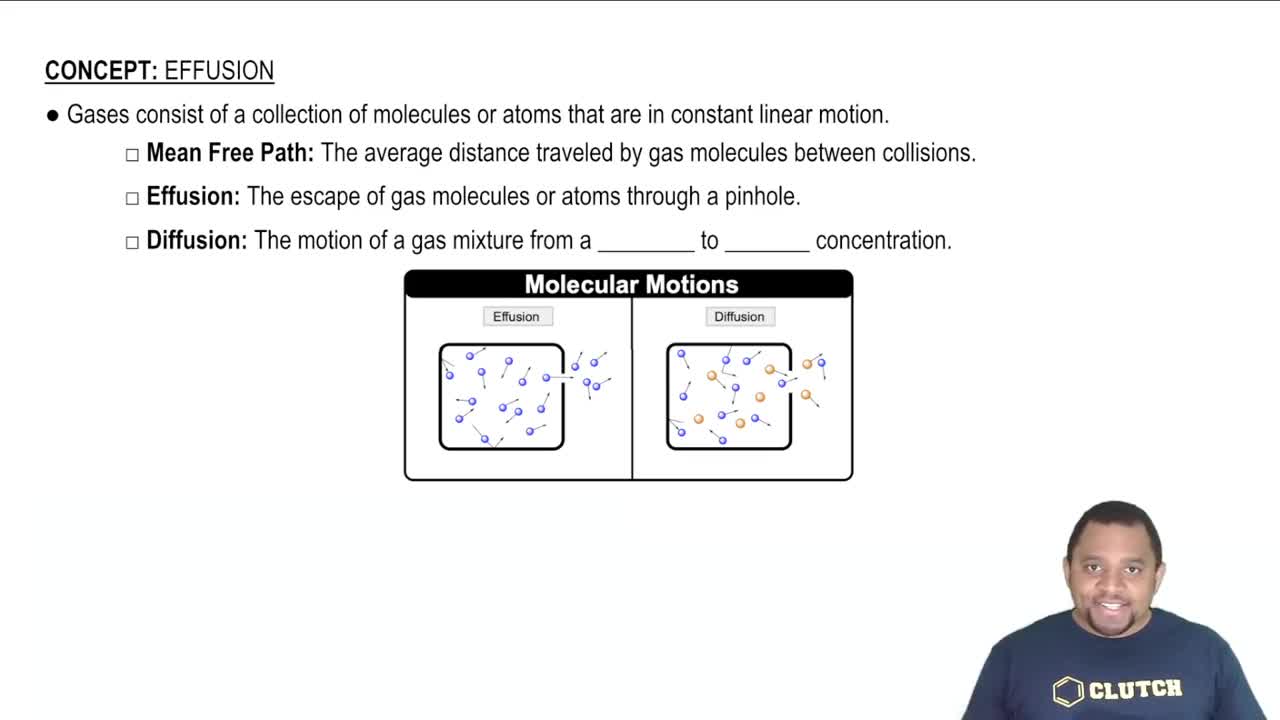Here are the essential concepts you must grasp in order to answer the question correctly.
Physical Properties of Gases
Gases have distinct physical properties such as density, solubility, and reactivity. At standard temperature and pressure (STP), hydrogen is much less dense than oxygen, which can be used to differentiate them. For instance, if you were to place a small object in each flask, the hydrogen would lift the object more easily due to its lower density.
Recommended video:
Chemical Behavior of Gases
Hydrogen and oxygen exhibit different chemical behaviors, particularly in their reactivity. Hydrogen is a highly flammable gas, while oxygen supports combustion. By introducing a small ignition source near the flasks, the presence of hydrogen would result in a more vigorous reaction, indicating its identity.
Recommended video:
Gas Diffusion
Diffusion is the process by which gas molecules spread from areas of high concentration to low concentration. Hydrogen, being lighter, diffuses faster than oxygen. If you were to observe the rate at which gas escapes from a small opening in each flask, the flask with hydrogen would show a quicker rate of diffusion compared to the flask with oxygen.
Recommended video:
 Verified step by step guidance
Verified step by step guidance


